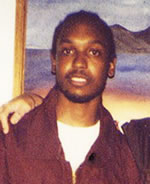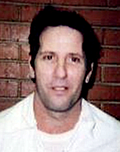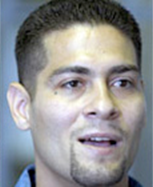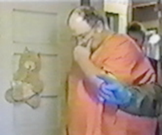
Police Coercion of Witnesses Leads to a Wrongful Conviction
Richard Diguglielmo, a New York City police officer, was convicted of murder and sentenced to 20 years to life in prison based upon the testimony of eyewitnesses whose statements at the crime scene were consistent with self defense. After hours and hours of interrogation, over a period of two weeks, the eyewitnesses shockingly changed their statements to fit the charges of murder and depraved indiffernece to human life proffered by the Westchester County District Attorney.
Richard DiGuglielmo: The Facts and the True Story
One day almost 11 years ago, a tragic series of events took place in Dobbs Ferry, New York, that would end one person’s life, ruin another man’s life, traumatize two families and shake up a community. There is a well-known version of these events essentially authored–“spun” — by the Westchester County District Attroney. Not surprisingly, since reporters rely on the DA for so much of their information, Pirro’s version of the story was the one portrayed for the most part in the media.
An objective review of the facts, based on police reports, court documents and transcripts, tells a more accurate, truer story. We invite you to make up your own mind, among other ways by imagining that you were Richard D. DiGuglielmo Jr.–“Richie”—an off-duty 11-year veteran of the New York City police department working at his family’s deli in Dobbs Ferry, New York, on October 3, 1996.
October 3, 1996
At approximately 5:15 p.m., Charles Campbell left his Corvette in the parking lot of the DiGuglielmo’s Venice Deli. With just eight parking spaces to be shared by three businesses, there were “Parking for Patrons Only” signs posted. As Mr. Campbell began walking across the street to a pizza parlor, Richard DiGuglielmo Sr., Richie’s father, let him know that he had to move his vehicle. Mr. DiGuglielmo made a second request, but Mr. Campbell did not reply and continued on and into the pizza parlor. In accordance with a procedure approved by the Dobbs Ferry Police Department, Mr. DiGuglielmo then affixed a sticker to the window of Mr. Campbell’s vehicle.
Inside the pizza parlor, told of the parking procedure, Mr. Campbell said, “if he puts a sticker on my car, I’ll kick his ass.” Then, seeing the sticker being put on his car window, Mr. Campbell ran out of the store and across the street. Richie, who had come outside to see what was going on, instinctively stepped between Mr. Campbell and his father, whereupon Mr. Campbell, in a fury, began punching Richie repeatedly in the face. Richie’s father and brother-in-law then entered the fray, which witnesses described as looking like a “wrestling match.” After much struggle, Mr. Campbell said, “that’s it” and started to walk away.
Believing the incident to be over and that Mr. Campbell would drive away, Richie went back inside the deli to tend to his wounds. But Mr. Campbell went only as far as the trunk of his car, and removed a metal baseball bat. Mr. Campbell, an amateur boxer in his thirties, swung the bat with “full force swings,” according to an eyewitness, with the first blow landing on the knee of Mr. DiGuglielmo, who was 54 years old and recovering from a heart attack. Then, as Mr. DiGuglielmo protected his head with his arms, Mr. Campbell landed another mighty swing, fracturing Mr. DiGuglielmo’s hand as it protected his head. Mr. DiGuglielmo was hit so hard that an eyewitness stated, “you could hear the smack a block away.” Another eyewitness exclaimed, “I was expecting to see Richie’s head pop off. I was, like, ‘Oh my God.'”
Inside the deli, Richie looked out the window and saw Mr. Campbell swing the bat at his father, who was two or three feet away from Mr. Campbell. Fearing the next swing would kill his father, Richie grabbed the registered firearm kept beneath the counter, ran outside with the gun at his side, with the safety on, hoping he wouldn’t have to use it. When he got outside the Deli, he saw his brother-in-law lying face down on the ground, not moving, and thought he was dead, and Mr. Campbell hitting his father with the bat. Reacting in accordance with his police academy training, Richie fired “three shots to center mass” at Mr. Campbell, then paused to “reassess the threat.” But it was over. Mr. Campbell had fallen to the ground, and he died at the scene.
Immediately following the incident, Richie contacted his Command at the New York Police Department in compliance with standard procedure, which brought an investigative team to Dobbs Ferry. However, upon arriving at the Dobbs Ferry Police Department, the team was denied access to Richie (and even denied access to a room with a telephone). Still, the investigators from the city reviewed the facts and were overheard by two people-including a firefighter standing nearby-reporting the incident as a “clean shoot,” that is, in police parlance, a justifiable homicide.
Nevertheless, within hours of the incident, Richie, his father and brother-in-law were charged with Second Degree Assault and, hours after that, Richie was charged with murder.
Trial and Media
Although Charles Campbell was black, and Richie and his family are white, the chief of police said the incident was not classified as a bias crime because no witnesses had heard any racial epithets during the extended confrontation that preceded the shooting. Richie had walked a beat in the Bronx for a decade with no racial incidents and had many black friends and colleagues on the force, including his own sergeant. The DiGuglielmo family were known to welcome friends and customers of any ethnic background into their home and deli.
Thus, media coverage appeared fairly short-lived, on par with other, similar, unfortunate incidents. This all changed five days after the incident, when DA Pirro held a televised news conference to announce that she was charging Richie with a “bias crime” based, she said, on a witness who was prepared to testify to having heard racial slurs during the confrontation. People who knew Richie were confounded. “There’s got to be more to it than this,” said an NYC transit officer who knew Richie. “He’d never lose his cool and do something stupid.”
Not long after DA Pirro’s press conference, the Rev. Al Sharpton arrived in town and would be a regular presence, leading demonstrations outside the family’s deli in the year leading up to the trial, and then in the courtroom.
Despite all that, the record shows that once the 33-day trial began, out of a dozen witnesses, Ms. Pirro failed to produce one who claimed to have heard racial slurs. But that didn’t stop her from walking into the courtroom during the trial and sitting next to Sharpton and Campbell family attorney Randolph Scott McLaughlin and holding his hand in full view of the jury.
Of the witnesses that did exist, some key ones that were supportive of the defense unexpectedly changed their stories. For example, an eyewitness named Michael Dillon, a cable TV lineman, told reporters just after the incident that he thought Richie was justified and acted in self-defense. “You see your father getting beaten with a bat, you got to do something about it. So it’s self-defense from what I saw,” he said in an interview. However, a year later, when asked in court whether he thought Richie had acted in self-defense, he answered, “After thinking about it, no.” According to defense lawyers, who had originally listed Dillon as one of their witnesses, Dillon only changed his story after police showed up at his job and told him his story conflicted with that of his supervisor, who had also witnessed the incident. Dillon said police interviewed him five days after the shooting, the day before DA Pirro publicly made her racial bias charge.
The Verdict
After three days of deliberations, the jury acquitted Richie of Intentional Murder and acquitted him of Assault. But it convicted him of Second Degree Murder by “Depraved Indifference” and Richie received a sentence of twenty years to life. All three defendants were acquitted of the assault charges.
How did Richie get convicted of Murder by Depraved Indifference? It’s easy enough to understand the notion of depraved indifference as it’s applied to an innocent bystander, say, caught in a crossfire. But Richie’s police training (“three shots to center mass”) is designed to avoid that very possibility. What doesn’t make sense is that Richie was charged and convicted of acting with depraved indifference in regard to Mr. Campbell’s life. Nobody is saying Richie didn’t use force that anyone knows is clearly potentially deadly. His intention was certainly to “harm” Mr. Campbell, to the extent that “harm” in this case means to “stop the imminent threat” of Richie’s father’s death from the blow of a baseball bat to the skull.Â
Since Richie’s conviction, several appeals courts have reversed cases based on similar scenarios, having concluded that the DAs cast their net too wide in charging both Intentional and Depraved Indifference Murder and judges had misinterpreted and misapplied the law regarding depraved indifference. Richie’s lawyers are now working on an appeal based on these precedents.
Has Justice Been Served?
What happened on October 3, 1996 was a tragedy, the culmination of a series of escalating events. Despite the verdict, the facts still beg the question of who caused the events of that day to happen. Was the shooting caused by the assault with the baseball bat, and was that caused by the wrestling, and was that caused by the punching, and was that caused by the sticker, and was that caused by the disregarding of a “no parking” sign? Did Mr. Campbell’s criminal record or the trace of drugs found in his blood at the autopsy play any role in the unfolding of events? Do guns kill? Do baseball bats?
Richie did not wake up in the morning planning to shoot anyone. Nor does he deny that he did. Of course he regrets that a man lost his life. Every day of his dreary existence in the Eastern Correctional Facility, Richie regrets what happened that day. But in all honesty, it’s impossible for him to regret his part in it, which was to save his father’s life. Did Mrs. Pirro honestly believe that if the person swinging the metal bat at Richard’s father had been a white man, he would not have shot him, but instead would have let him strike his father in the head?
This tragedy was not about race, despite what a DA positioning herself for re-election contended. Unable to produce any evidence of racial bias, prosecutors switched their theory midway to a crime of revenge. But once issues are framed in terms of bias, it’s not so simple to undo them. A defense lawyer said they had to go through some 140 jurors during jury selection because so many local citizens were tainted by the bias charges. Circumstances didn’t help, as the trial got underway around the time of the Abner Louima incident.
A man was not killed over a parking space, as some headline writers sensationalistically and blithely wrote. Mr. Campbell made a conscious decision to use deadly physical force, and Richie reacted with split-second timing, based on his law enforcement training, using deadly force against deadly force to protect his father from being killed. The New York State penal code sanctions police officers to use deadly force if they believe their life or the life of another is endangered.
Now in his 10th year of incarceration, Richie will go to his grave believing he didn’t face any good choices that day, because if he had acted differently there’s a good chance he’d be free today to visit his father’s grave. “What I truly believe is that the decision I made that day is the decision that saved my father’s life,” Richie has said. Shortly after that October afternoon, Richie told his mother, “I never could have picked Daddy up off that parking lot.”
If you had been in Richie’s place, and it had been your father, what split-second choices would you have made?






